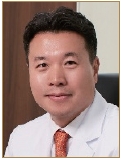
As artificial intelligence (AI) and robotics have rapidly advanced in recent years, it has become an established fact that they are significantly influencing the field of medicine. Taking a skeptical view and resisting the integration of AI and robotics into medicine is likely an outdated perspective. Here, it is wise for physicians to approach the utilization of AI and robots in medicine with deep insight and thoughtful planning. Embracing these technological advancements and formulating strategic plans for their application is essential for staying current in this evolving era.
Publishing a special issue on AI and robotics by compiling the latest papers from leading experts worldwide in the Neurospine is not only timely but also holds significant implications for various medical fields beyond spine surgery. This initiative reflects the journal’s commitment to staying at the forefront of advancements and provides valuable insights for other medical disciplines.
The first-generation spinal surgery robot has already accumulated a significant amount of clinical data and demonstrated highly successful surgical outcomes. The 1st generation spinal surgery robot utilizes a basic robotic platform and navigation system, incorporating fundamental AI functionalities [1]. Following this success, it is anticipated that the next generation of robots will soon emerge.
In the field of medicine, developing AI and robotics separately is meaningless. They must be integrated to create synergy and provide genuine assistance to the medical field.
One of the ultimate goals in the field of spine surgery for AI robots is the development of autonomous robots. Autonomous robots in the research phase have taken various forms and been developed in multiple surgical domains [2]. The applications in the field of surgery are diverse, ranging from conventional laparoscopic robots to developments in microrobotics for minimally invasive procedures [3].
The 6 levels of autonomy for surgical robotics given by Yang et al. [4] are defined as follows: Systems at level 0 (no autonomy) are not autonomous. Level 1 (robot assistance) is capable of interacting with the surgeon to guide or support the execution of a particular task. Level 2 (task autonomy) is capable of accomplishing specific surgical tasks based on specifications provided by the surgeon. Level 3 (conditional autonomy) is provided with perceptual capabilities to understand the surgical scenario, plan and execute specific tasks, and update the plan during execution. Level 4 (high autonomy) can interpret preoperative and intraoperative information, devise an interventional plan composed of a sequence of tasks, execute this plan autonomously, and replan if necessary. A surgeon supervises the system under the discrete control paradigm. Level 5 (full autonomy) can perform surgery on their own with no human input.
Over the years, various development companies have been involved in the creation of diverse surgical robots, resulting in a wide range of robotic forms. In comparison to the singular form of humans conducting all diagnoses and surgeries, the development of AI and robots is expected to progress towards achieving a level comparable to human doctors by maintaining consistent database analysis methods for AI and adopting standardized structural platforms for robots [2,3].
In the field of spinal surgery, the role of AI and robots is to collaboratively and interactively assist physicians throughout the entire surgical process, from preoperative stages to intraoperative procedures and postoperative care. The application of AI robots in current and future spinal surgery can be exemplified as follows:
Preoperative Stage: Utilizing AI for automatic segmentation and 2-dimensional-3-dimensional image registration of preoperative images. Employing AI to analyze patient information from an appropriately scaled database to predict surgical risks and outcomes. Determining the optimal surgical approach tailored to the individual patient, prioritizing the most favorable prognosis. For procedures like pedicle screw insertion, an AI-driven automatic planning system suggests the appropriate screw path. The surgeon reviews the AI-recommended surgical approach and makes the final tuning and decision, applying it to the surgery plan and robot.
Intraoperative Stage: Guiding and autonomously executing basic surgical steps during the procedure. Real-time digitalization and analysis of visual information by AI, including object recognition, localization, and tracking [5]. Robot Control and Autonomy-Adjusting the robot or allowing autonomous robotic control based on the AI-analyzed surgical environment. Minimizing human factors such as stress and fatigue during long and intensive surgical situations, resulting in enhanced precision and reduced errors compared to human capabilities.
AI and Robot Integration for Standardization: Integrating AI and robots to achieve standardized optimal surgical approaches. Enhancing medical services, ensuring positive patient outcomes, and enhanced safety through the greater precision and minimization of errors [6]. If AI and robots have a cloud platform, it will open an era where optimal surgical plans can be efficiently delivered remotely.
In the context of AI and robotic surgery, it is crucial to fully understand that the limitations in problem-solving capabilities arise from AI being based on existing, finite databases. However, within the capacities of AI utilizing traditional databases, it is essential to identify elements that surpass human capabilities. For instance, applying computer vision augmentation, invisible light/object detection, and optimal responses to simultaneous and multiple stimuli at all stages during the surgical process represent skills that healthcare professionals must cultivate for the future.
Robots and AI are 2 separate concepts but inseparable in future surgery.
While it may be challenging for robotic AI to ultimately replace physicians, it can undoubtedly provide invaluable assistance to doctors in treating and performing surgeries at the highest level. Continuous exploration of AI robot capabilities beyond human capacities is essential. The point where human capabilities end marks the starting point for robotic AI, and the point where the capability of robotic AI plateau becomes the juncture where human creativity comes into play again. Human creativity is beyond the capability of AI-robotics. The ultimate conclusion is always the realization of the greatness of human beings.
































